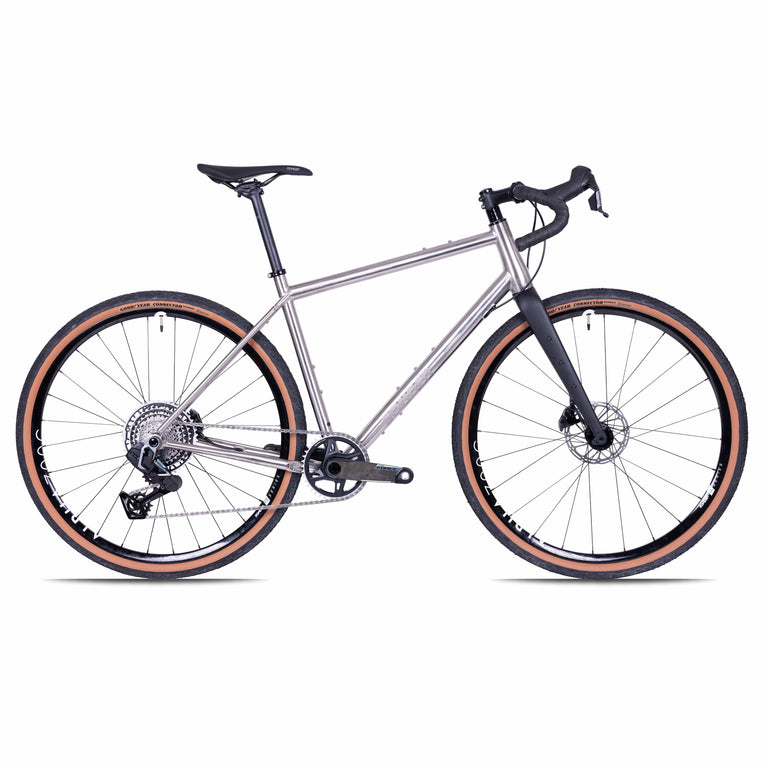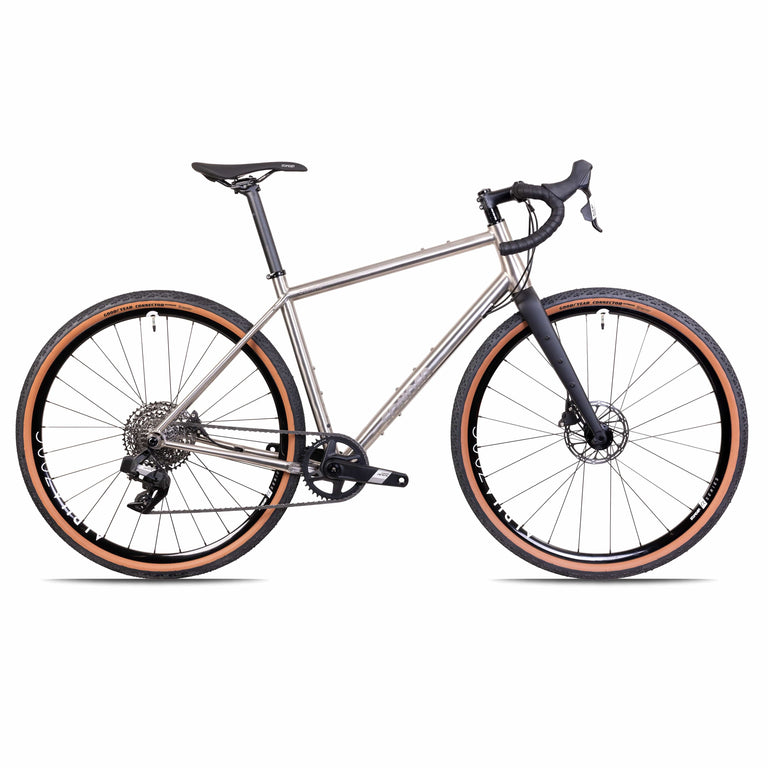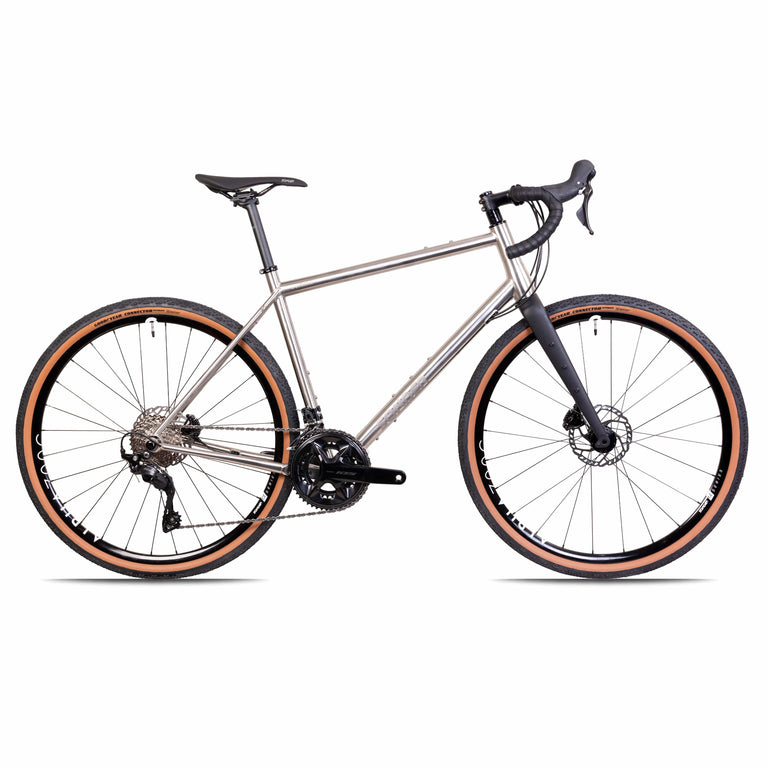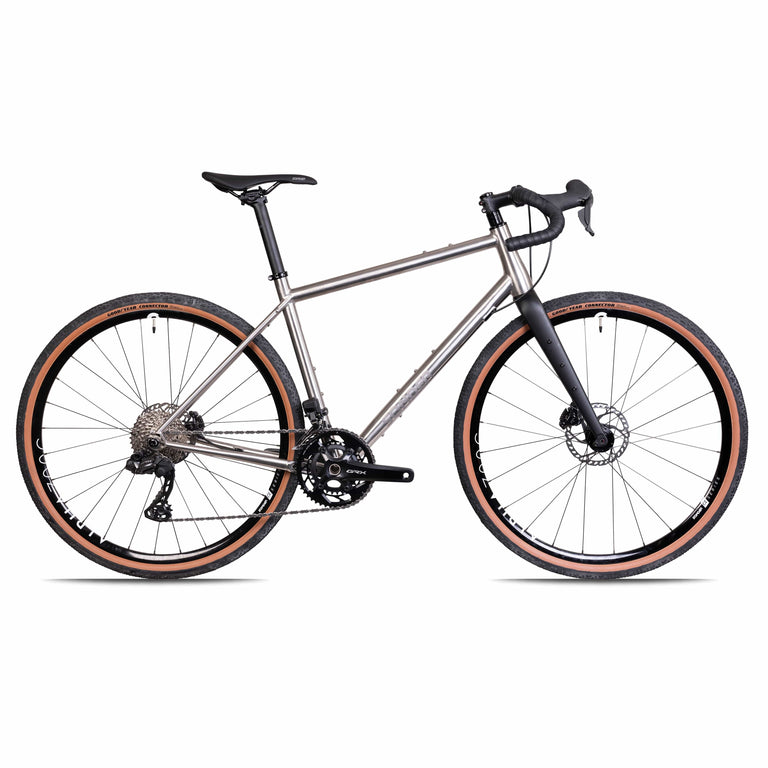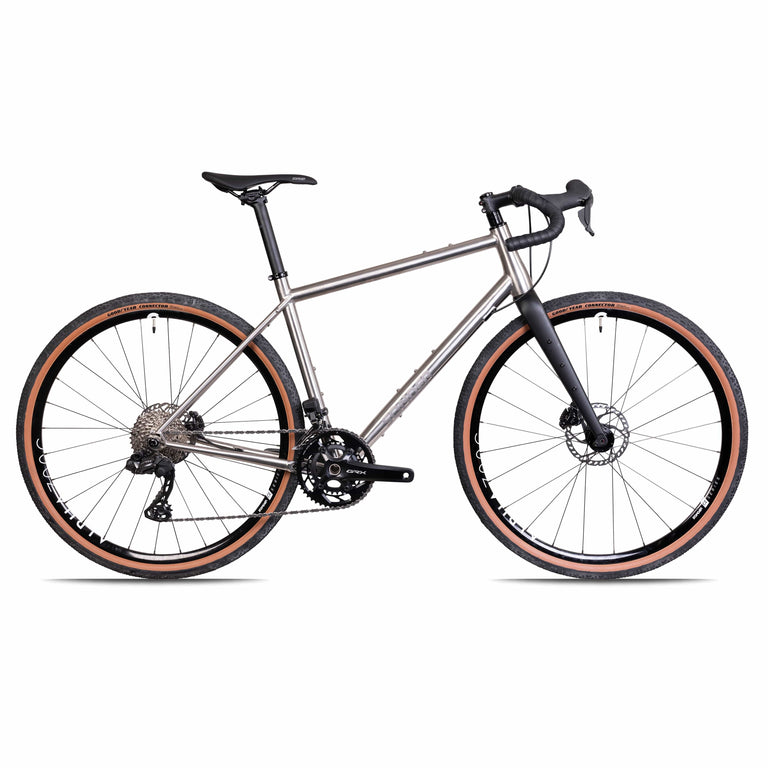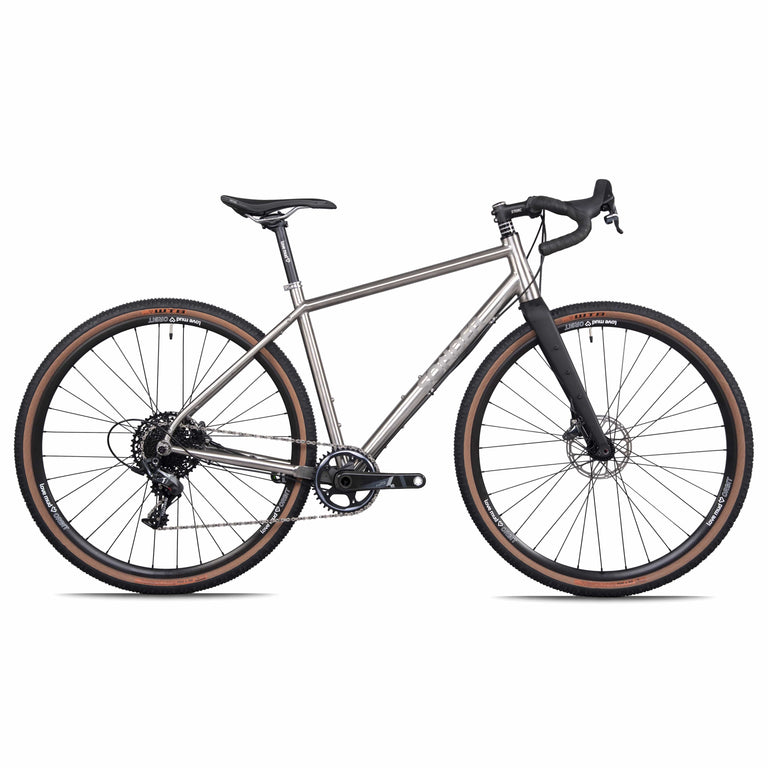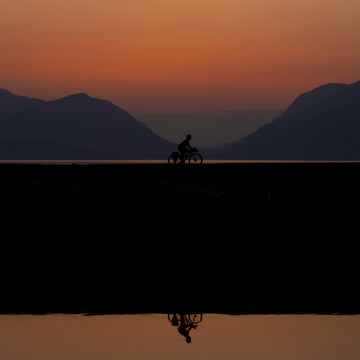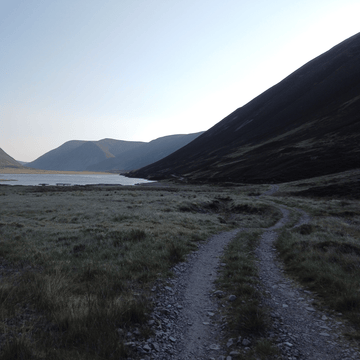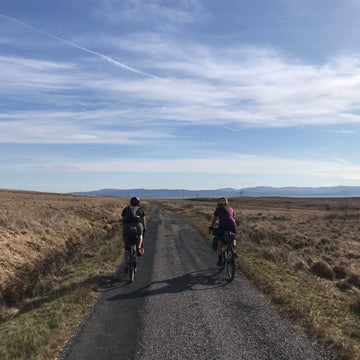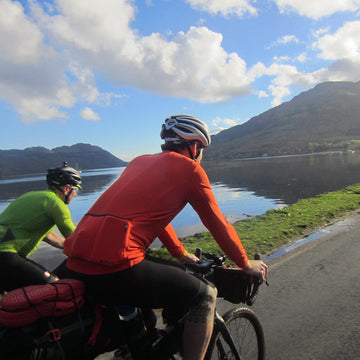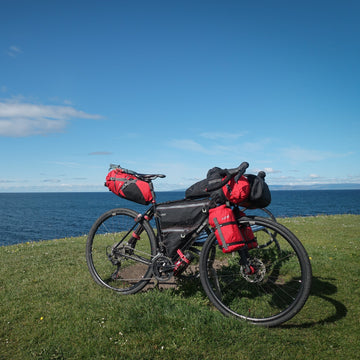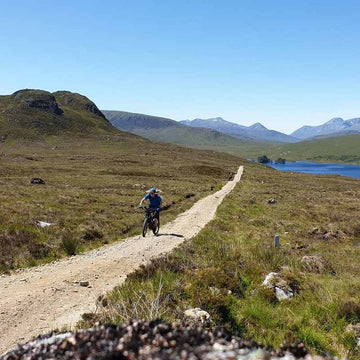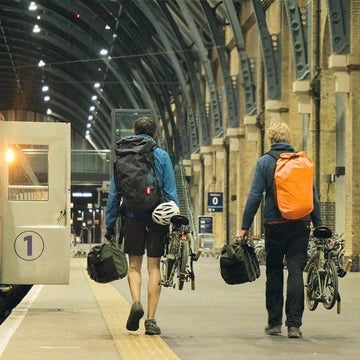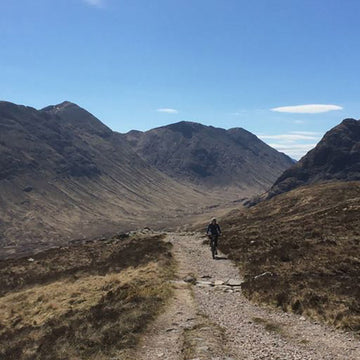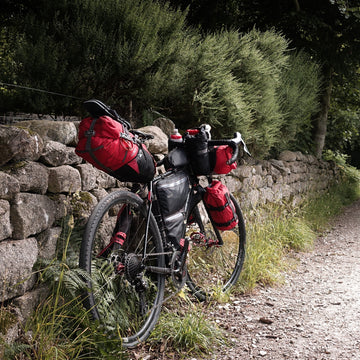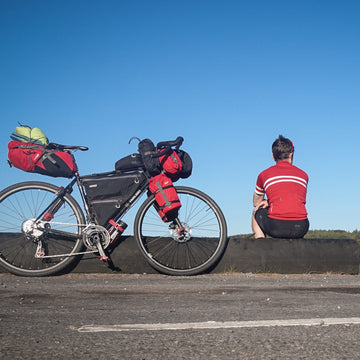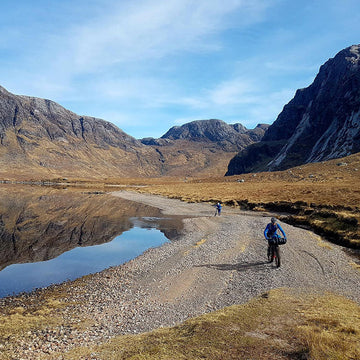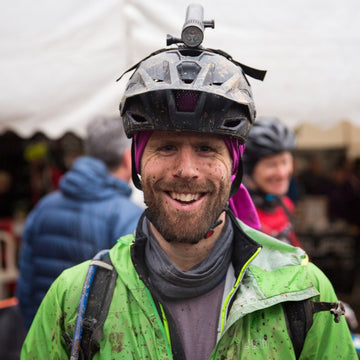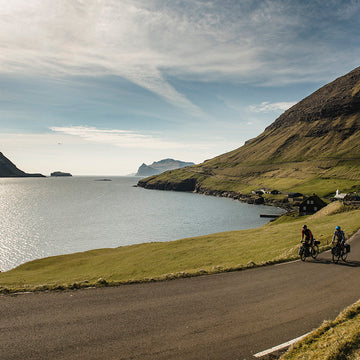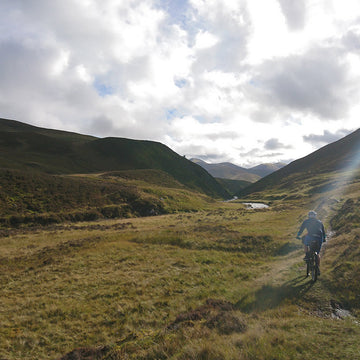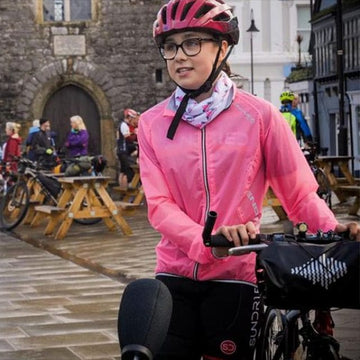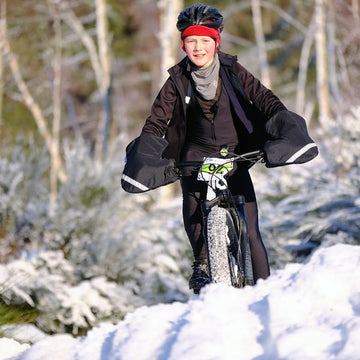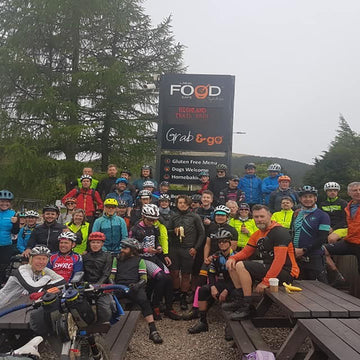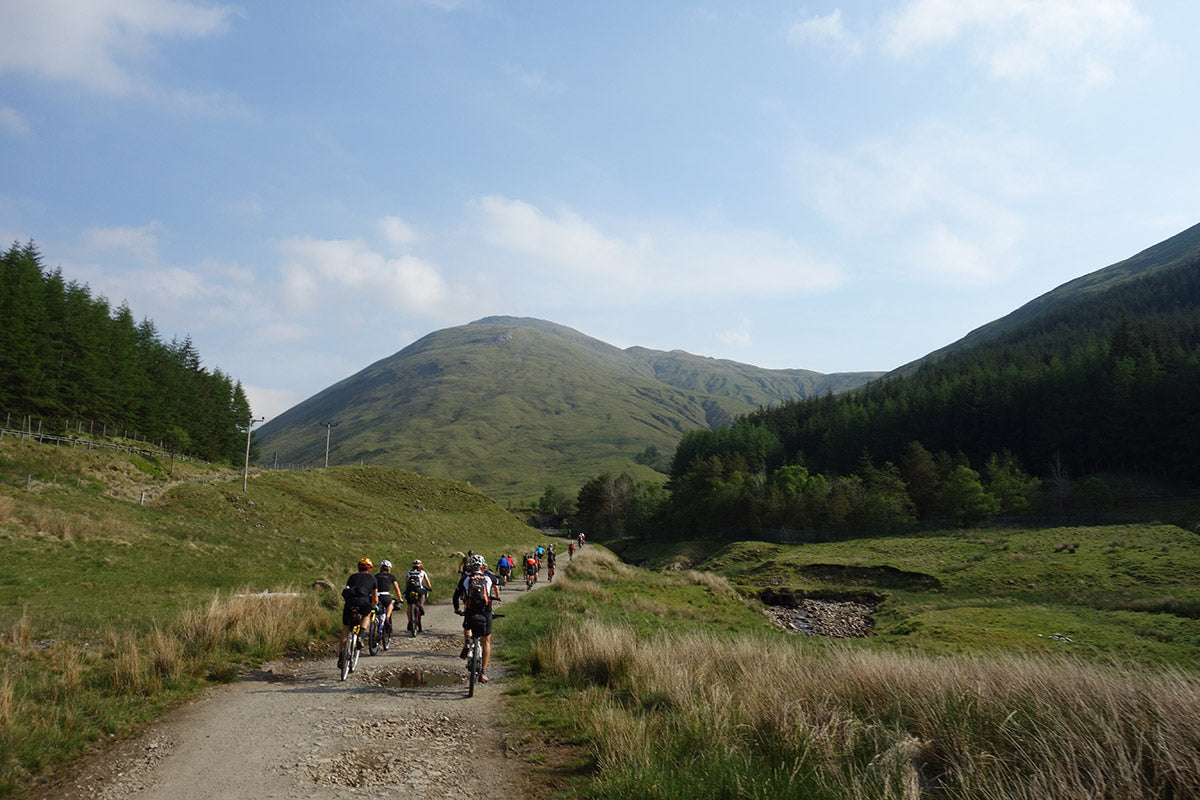
The Art of Not Going Slowly Part 1: Embracing the philosophy of fast-paced adventure.
Here at Adventure Pedlars, we’ve always been keen advocates of going slowly on two wheels. Ever since our own two-year cycle tour from the UK to New Zealand, we’ve been firm believers that the world is just too good to miss out on with your head down and buried in a pit of sweat-stained misery. As such, our aim ever since has been to try to spread the word that cycle touring and bikepacking doesn’t have to be too difficult, that anyone can do it regardless of their experience or fitness levels, and that it should be more about spending quality time in The Places In Between than reaching your destination quickly. If you like, we’re the ‘anti-Mark Beaumonts’ of this world and we’re damn proud of it too!
So imagine, if you will, the sight of me munching down heartily on a diet of my own words as I lined up on the Highland Trail (HT550) start line in Tyndrum with a bunch of lunatics from all over the world who are most definitely all about going fast; pushing themselves to the limits of human endurance for no other reason than to put an arbitrary time down on a seldom looked at leaderboard . and I was one of them. Despite all my previous preaching, it turned out that this was an itch that I just had to scratch. I’ll admit I was intrigued to find out what it was all about and to see how far I could push myself, but I was prepared for the whole thing to be utterly miserable. To make things even worse, I’d imposed my own challenge of finishing the 550 mile (885km) off-road, self-supported bikepacking race across some of Scotland’s toughest terrain in under six days (the challenge being eight). All so that I’d be able get back down to the Lake District for the following Saturday to deliver a presentation about the race at the Adventure Cycle Festival as the warm-up act for.er, yep, you’ve guessed it; Mr Mark Beaumont.

Don't let the smile fool you! Preparing for six days of misery
A shift in mindset was definitely called for. Starting off with my kit; out went my selection of spices, coffee maker and folding sink and in went. well, as little as possible really. Alpkit came to the rescue by providing me with a (tiny) heap of lightweight, packable, and titanium loveliness to load up onto my Sonder Transmitter which, even with it’s reduced load appeared significantly burlier than some of the super-lightweight rigs it was lining up next to. My nerves mounted higher as I wondered what on earth I had got myself into. This was definitely new territory for me and I had no idea of how I’d hold up. A couple of encouraging words from Alpkiteers Rich and Tom at the start line, having just completed the route, did little to calm the tension. You’d think the knowledge that a twelve-year-old had completed the challenge would fill me some sort of confidence, but knowing Tom, everything was still most definitely up in the air and if anything I now had to prepare to be a little embarrassed.
Racing the Highland trail seems like it should be extraordinarily difficult but in many ways it is, in fact, perfectly easy. The simple goal of constant movement distills life down to its purest form and every decision can then be easily made by asking one simple question: will it make me faster?
My previous self would have baulked at such a statement, claiming that I’d missed the point of travel by not taking the time to enjoy it. However, there is a strange and meditative state, reached simply by passing seamlessly through a landscape day after day, that in some way makes you closer to it. In the same way that a river passing through a glen never stops yet inextricably forms a part of the fabric of the terrain through which it flows, I had the overwhelming sensation that I was caught in some kind of flow, passing through the extraordinarily beautiful landscape and, like a river, I had little chance of stopping it. Whilst I was occasionally able to slow my progress by eddying out of the stream, I became resigned to the fact that it wouldn’t stop until I was spat out of the other end. Such a sensation links you to the hills and the breeze, the birds, and the trees, to the deer and the hare, the squelch of the bog under your feet, and the clatter of the rocks away from your tyres. It was a connection unlike anything I’d previously felt, and whilst, no doubt, sleep deprivation and exhaustion probably had their part to play, through this state I found something that made me reassess my whole opinion of racing.


Althought I wasn't taking my time in The Places In Between, I found a new connection with the landscapes I traversed
This became my final lesson, although somehow it’s difficult to now put my finger on what that exactly was. Riding the remote second half of the race, mostly by myself, I found an immense satisfaction in the sensation of continual movement; even across the most frustrating of hike-a-bike terrain that had by now become commonplace. I’d argue strongly that the HT550, rather than being a ‘bike race’, is in-fact a ‘race with a bike’. there’s a subtle but all-important difference. Long sections of terrain, that never really had any intention of being ridden by a bicycle, caused many riders to bow their heads in submission and simply push on with gritted teeth. I, on the other hand, had found a kind of jovial game to play across these sections. With the trail riding capabilities of the plus-tired Transmitter now playing to my advantage and my mountain biking background being firmly rooted in the school of technical and nadgery British terrain, I’d try my best to ride all that I could of the route. However rather than stalling and cursing any unrideable sections, my aim was to hop off the bike and seamlessly keep moving forward on foot. It was a game I didn’t always win at but as time went on I’d spot features on the ground that would help me hop on and off the bike with as little effort as possible. My mantra was ‘just keep moving’ and in some ways I’d even relish these sections for keeping my mind occupied. The hours would slip away in a kind of semi-painless blur. Flat, fast sections on the other hand, such as the Great Glen Way between Fort Augustus and Fort William, really had me suffering, struggling relentlessly to urge my body and mind onwards. But all the while I’d try to maintain an unfaltering acceptance of the simple inevitability of moving forward.

I’ve never really found this state before and I believe that perhaps it’s only through the motivation of some kind of race that such a state can be achieved. Not necessarily in the competitive nature of it all; at the top of the very last pass before the finish, ‘The Devil’s Staircase’, I had to be snapped out of a moment of sunset appreciation by Alan, the race founder, as he caught me at the end of what was a good natured tussle that had lasted between us for the whole of that 200km day. “What are you waiting for?!!” he yelled “GO!!”, reminding me that “this is race you know!”. But whilst beating other competitors to the finish line wasn’t really my driving motivation. Racing did give me the incentive to push myself beyond what I thought I was capable of andm as a result, has opened up a whole new world of understanding.


I think after four days and sixteen hours something in me has changed.

Still smiling at the finish line:
Sonder Bikes
Camino Al Apex1 AXS XPLR
- Sram Apex AXS XPLR 12-speed groupset
- Sonder Nova I25 Gravel UK Made wheelset
Camino Al Rival AXS XPLR
- SRAM Rival AXS XPLR 13-speed groupset
- Sonder Alpha I25 Gravel UK Made wheelset
Camino TI Force AXS XPLR
- SRAM Force XPLR 13-speed groupset
- Sonder Alpha I25 Gravel UK Made wheelset
Camino TI Rival AXS XPLR
- SRAM Rival AXS XPLR 13-speed groupset
- Sonder Alpha I25 Gravel UK Made wheelset
Camino Al Apex1 Flat Bar
- SRAM Apex 12-speed groupset
- Sonder Nova I25 Gravel UK Made wheelset
Camino Al 105
- Shimano 105 R7120 12-speed groupset
- Sonder Nova I25 Gravel UK Made wheelset
Camino Al GRX1
- Shimano GRX 610 12-speed groupset
- Sonder Nova I25 Gravel UK Made wheelset
Camino Al GRX2
- Shimano GRX 610 12-speed groupset
- Sonder Nova I25 Gravel UK Made wheelset
Camino Al 105 Di2
- Shimano 105 R7170 Di2 12-speed groupset
- Sonder Alpha I25 Gravel UK Made wheelset
Camino Al Frame And Fork
- 6061 aluminium frame
- Gravel geometry
- Carbon monocoque fork
- Huge tyre clearance
Camino TI 105
- Shimano 105 R7120 12-speed groupset
- Sonder Alpha I25 Gravel UK Made wheelset
Camino TI GRX2
- Shimano GRX 610 12-speed groupset
- Sonder Alpha I25 Gravel UK Made wheelset





